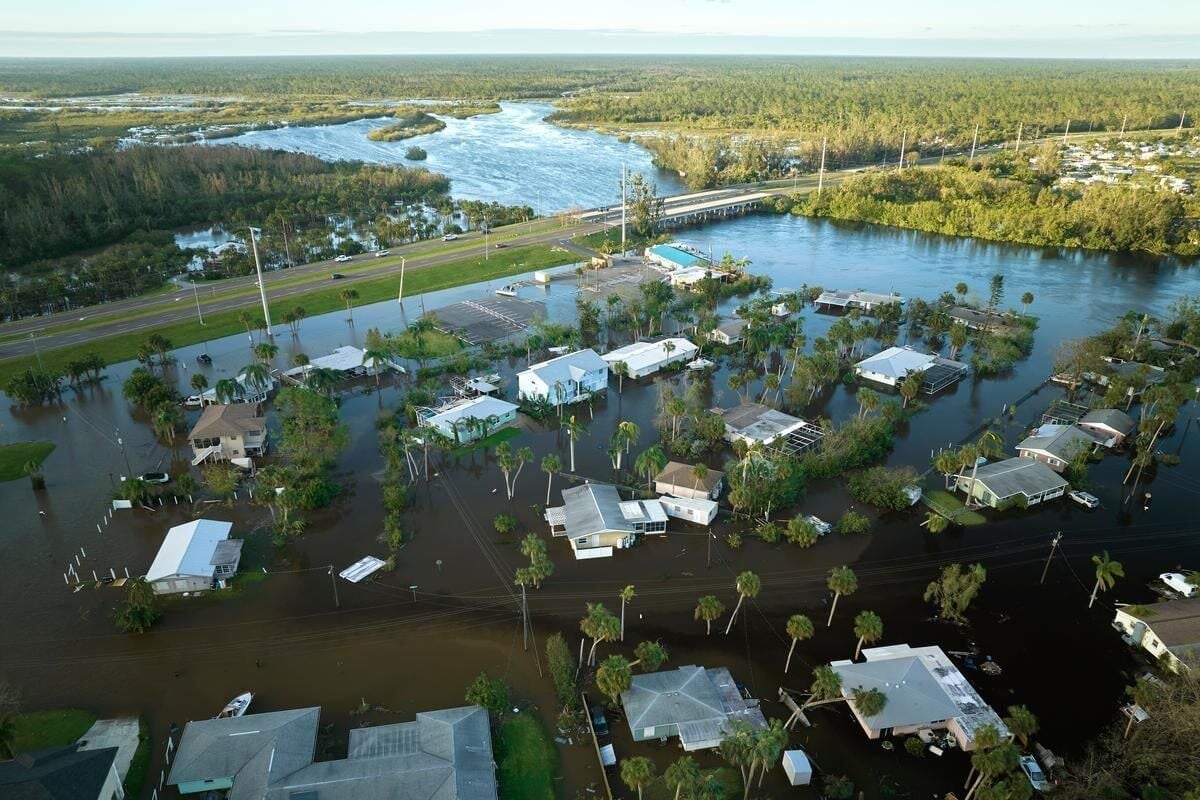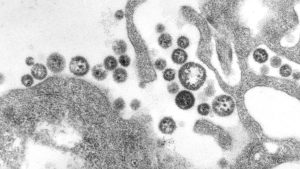Are You Safe? The Alarming Rise of Flesh-Eating Bacteria After Florida’s Hurricanes
USA NEWS – In the wake of recent hurricanes impacting Florida, the state is grappling with a significant surge in cases of Vibrio vulnificus, a flesh-eating bacteria. This alarming trend, exacerbated by heavy rains and flooding, has raised concerns among health officials and the public alike. The Florida Department of Health has reported 76 confirmed cases of this dangerous infection in 2024, surpassing last year’s record of 74 cases, coinciding with the destructive Hurricane Ian and other severe storms.
Understanding Vibrio vulnificus
Vibrio vulnificus is a naturally occurring bacterium found in warm saltwater and brackish environments, particularly during the summer months. While generally harmless to healthy individuals, it poses severe risks to those with open wounds or compromised immune systems. Infection can lead to necrotizing fasciitis, a condition where the tissue around the wound rapidly deteriorates. If left untreated, it can result in limb amputation or even death within a few days.
The current spike in cases is largely attributed to the aftermath of Hurricanes Helene and Milton. As these storms made landfall, they mixed fresh and saltwater, creating ideal conditions for the bacteria to flourish. Floodwaters, often laden with pollutants and debris, can carry Vibrio vulnificus into areas where it is typically not found, posing a risk to anyone exposed to these waters.
Recent Trends and Statistics
The surge of cases following Hurricane Helene’s landfall on September 26 has been particularly concerning. Before the hurricane, there were no confirmed cases in Pinellas County and only one in Hillsborough County. However, following the storm, Pinellas County reported 14 confirmed cases and Hillsborough County eight cases, according to the latest health department data. The number of cases rose dramatically from just six confirmed instances in September to 23 by the end of that month. As of now, the total has reached 38 confirmed cases linked directly to the hurricanes.
The distribution of these cases across various counties highlights the widespread impact of the recent storms. Notably, counties such as Charlotte, Citrus, Hernando, Hillsborough, Lee, Pasco, Pinellas, and Sarasota have reported unusual increases in Vibrio vulnificus cases.
Symptoms and Treatment
Symptoms of Vibrio vulnificus infections can vary but often include:
- Watery Diarrhea: Accompanied by stomach cramps, nausea, vomiting, and fever.
- Bloodstream Infections: Characterized by fever, chills, dangerously low blood pressure, and blistering skin lesions.
- Wound Infections: Presenting with fever, redness, swelling, and discharge from the infected area.
Health officials stress the importance of seeking immediate medical attention for anyone who has been exposed to floodwaters and exhibits these symptoms. Treatment typically involves antibiotics; however, severe infections may necessitate intensive care or even surgical intervention to remove dead tissue.
Prevention Guidelines
Given the current health crisis, the Florida Department of Health has issued critical recommendations to help mitigate the risk of infection:
- Avoid Floodwaters: Refrain from swimming or wading in floodwaters, standing water, seawater, or brackish water.
- Protect Wounds: Cover any open cuts or wounds with waterproof bandages before exposure to potentially contaminated water.
- Wash Thoroughly: Cleanse skin and any open wounds with soap and clean water immediately after contact with floodwaters.
These precautions are essential, especially as health officials continue to monitor the situation closely following the recent hurricanes.
The Broader Impact
The implications of the rising Vibrio vulnificus cases extend beyond individual health risks. The surge reflects broader environmental and public health challenges associated with climate change and extreme weather events. As hurricanes become more frequent and intense, the likelihood of flooding—and thus exposure to harmful bacteria—may increase, raising questions about preparedness and response strategies.
In conclusion, the current rise in flesh-eating bacteria cases in Florida following the recent hurricanes serves as a stark reminder of the interconnectedness of our environment and health. As residents and authorities navigate this crisis, awareness and adherence to safety protocols can help mitigate the risks posed by Vibrio vulnificus. Keeping informed and taking precautions is essential for safeguarding public health in the face of changing climate conditions.
For ongoing updates and further information, residents are encouraged to follow local health advisories and stay informed through reliable sources.

